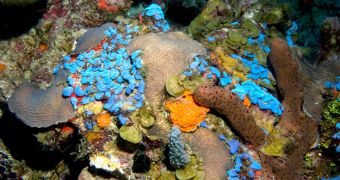A group of researchers conducting investigation in the waters off the coasts of Puerto Rico were able to discover populations of coral reefs living at average depths, of between 100 and 500 feet. These reefs appeared to be in good health, which is tremendous news.
Conservation experts believe that these reefs and the biodiversity they house may be the key towards replenishing shallower reefs, which are currently in deteriorating health, due to human influences, the rise of invasive species, the advancing of sand and algae and so on.
These new corals were discovered by scientists in a 12-mile span of water off the southwestern coast of Puerto Rico. The research was sponsored by the US National Oceanic and Atmospheric Administration (NOAA).
The ecosystems that were discovered are extensive and biologically diverse, featuring a wealth of species that researchers hope can be transplanted to shallower depths. Replenishing those corals is a priority for conservation efforts, since shallow reefs are critically endangered.
Overall, in the Puerto Rico area, fish populations are declining, due to overfishing and other factors. It could be possible, experts hope, to take some fish from mid-depth corals and use them to replenish surface populations.
These coral ecosystems are called mesophotic, which literally translates into middle light. Marine biologists explain that they are the deepest-living type of light-dependent coral reefs in the world.
This type of reefs have been largely ignored by science over the past few years, due to the cost and technical difficulties associated with studying them. They are too deep for scientists to explore with individual scuba gear.
“We had no idea how extensive, vibrant, and diverse these mesophotic coral ecosystems are off La Parguera,” explains the lead principal investigator of the study, scientist Richard Appeldoorn, who is based at the University of Puerto Rico in Mayaguez.
“At mesophotic depths in Puerto Rico, scientists are seeing fish species that were once common inhabitants of shallow reefs such as groupers, snappers, and reef sharks,” explains Kimberly Puglise.
“These reefs stand in stark contrast to declining shallow water reefs in the same area,” adds the expert, who holds an appointment at the NOAA Center for Sponsored Coastal Ocean Research.
“We recognize the need to extend protections to mesophotic coral ecosystems in Puerto Rico, and the information being provided by this research is key to making that happen,” concludes the director of Puerto Rico’s Coastal Zone Management Program, Ernesto Diaz.

 14 DAY TRIAL //
14 DAY TRIAL //